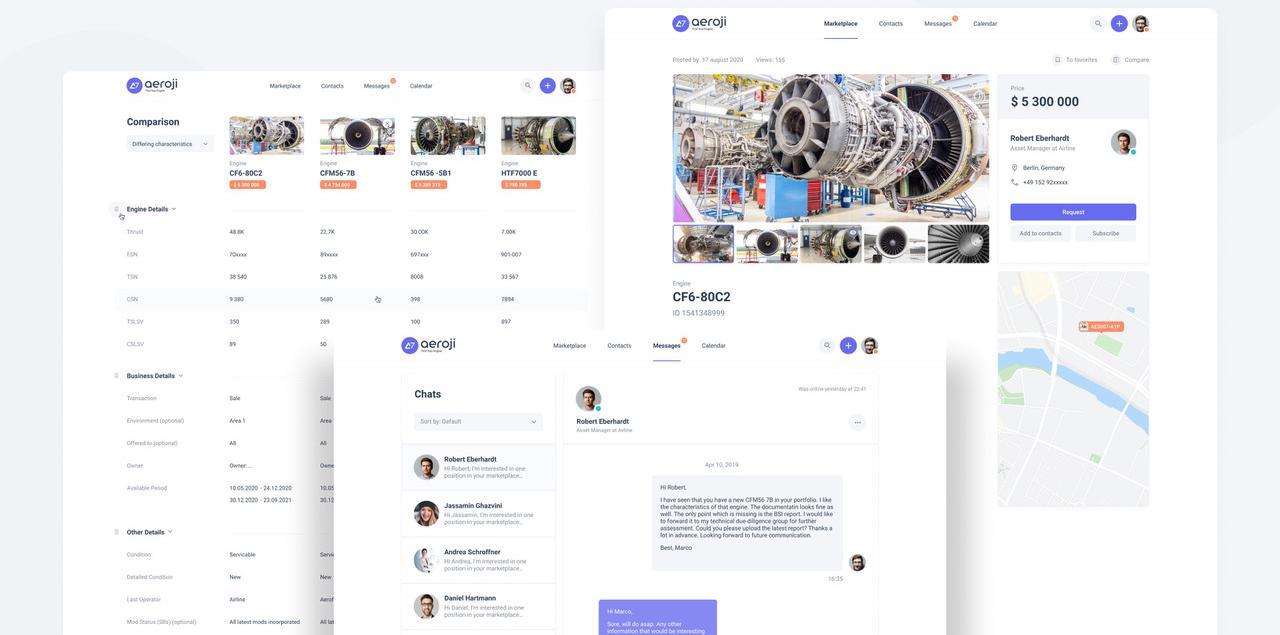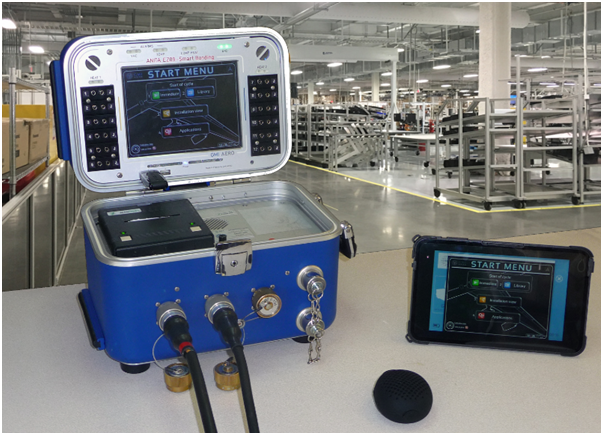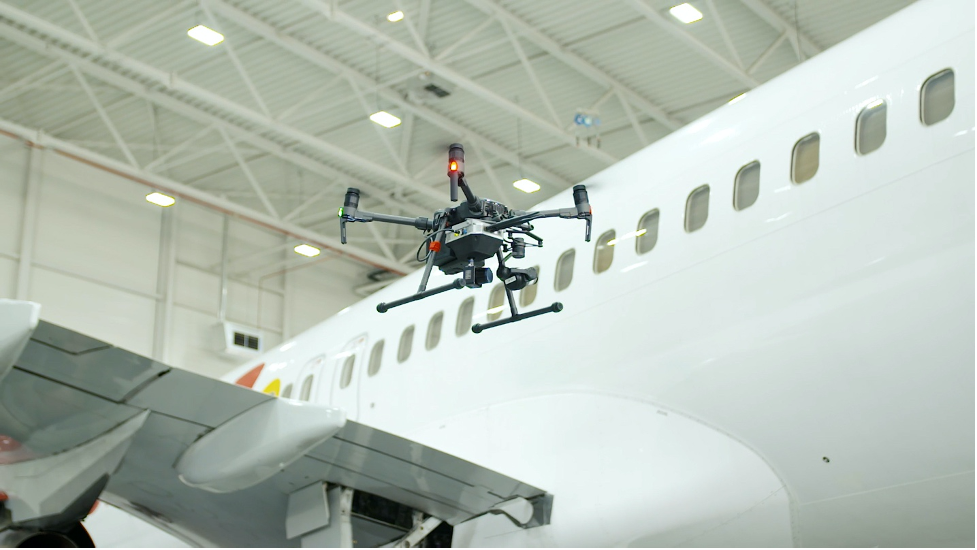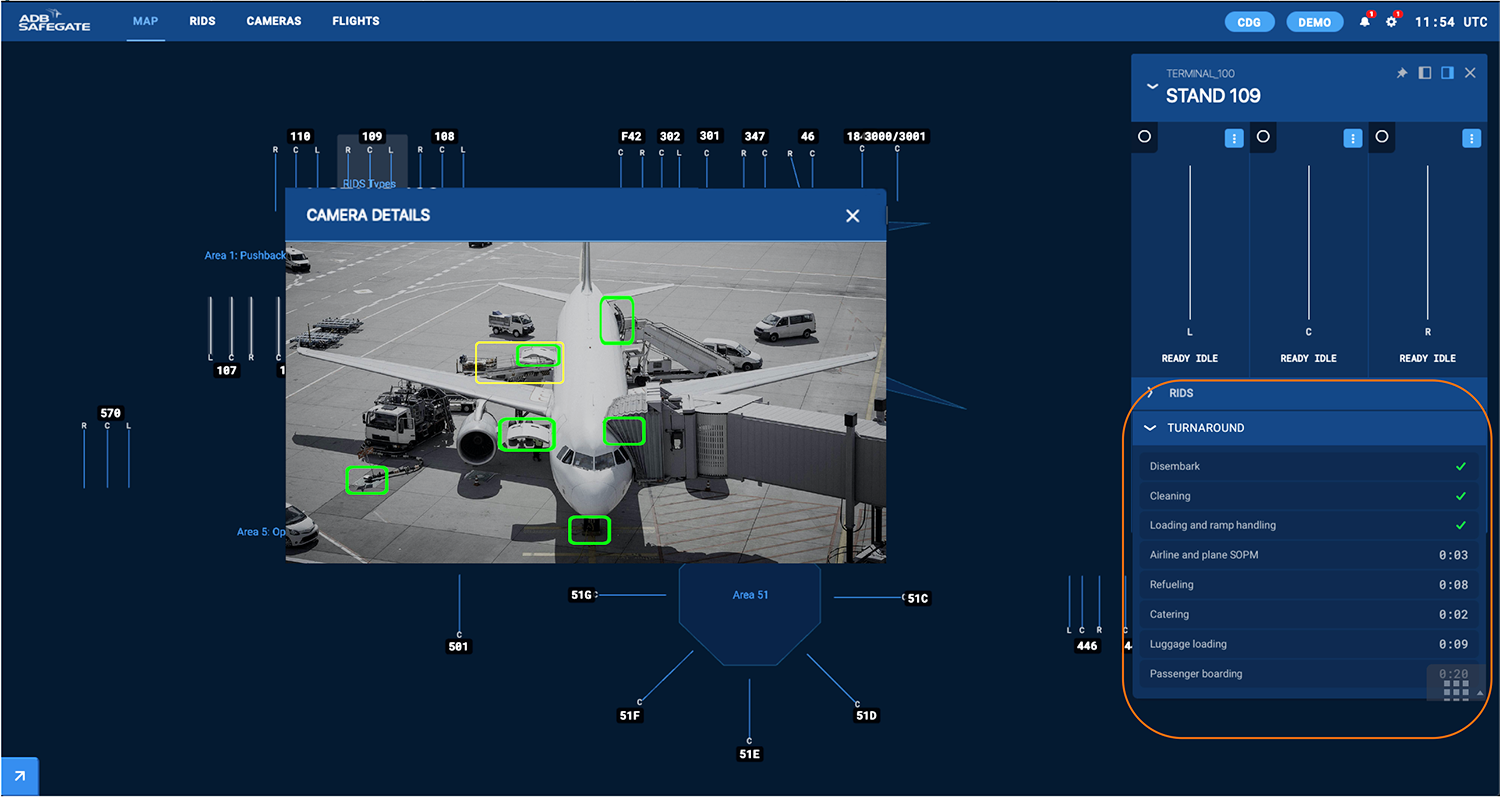
Robotic Mechanic
Credit: NLR
The Netherlands Aerospace Laboratory (NLR) is developing a robotic mechanic named ARVI (autonomous robot for visual inspections) that could eventually perform like “an apprentice mechanic,” navigating through a hangar and performing aircraft inspections just like human technicians. NLR is programming ARVI to carry out visual inspections to map and detect defects such as dents, scratches, broken wires, corrosion, dirt or leakages. Images taken by the robot will be analyzed by neural based analysis and artificial intelligence (AI) software tools. NLR is working with the Dutch Ministry of Defense to test the technology and is looking for aviation companies to help it develop the technology. It hopes to have a minimum viable product for the market by late 2022.
The Netherlands Aerospace Laboratory (NLR) is developing a robotic mechanic named ARVI (autonomous robot for visual inspections) that could eventually perform like “an apprentice mechanic,” navigating through a hangar and performing aircraft inspections just like human technicians. NLR is programming ARVI to carry out visual inspections to map and detect defects such as dents, scratches, broken wires, corrosion, dirt or leakages. Images taken by the robot will be analyzed by neural based analysis and artificial intelligence (AI) software tools. NLR is working with the Dutch Ministry of Defense to test the technology and is looking for aviation companies to help it develop the technology. It hopes to have a minimum viable product for the market by late 2022.

Paperless Collaboration
Credit: Lufthansa Technik
Lufthansa Technik (LHT) recently launched a solution called Technical Logbook on its Aviatar platform, which it says will improve collaboration between pilots and maintenance crews while reducing turnaround times and costs. The system replaces manual entries into paper logbooks, offering prefilled text blocks and automated input masks to capture aircraft technical issues during flights and on the ground. The solution works with any hardware device, provides real-time data availability and can connect with a customer’s maintenance and engineering system. LHT says Technical Logbook improves data quality and transparency and can help airlines gain insights into trend analytics. Wizz Air recently became the launch customer of Technical Logbook and plans to use it to introduce fully paperless operations for crews and maintenance.
Lufthansa Technik (LHT) recently launched a solution called Technical Logbook on its Aviatar platform, which it says will improve collaboration between pilots and maintenance crews while reducing turnaround times and costs. The system replaces manual entries into paper logbooks, offering prefilled text blocks and automated input masks to capture aircraft technical issues during flights and on the ground. The solution works with any hardware device, provides real-time data availability and can connect with a customer’s maintenance and engineering system. LHT says Technical Logbook improves data quality and transparency and can help airlines gain insights into trend analytics. Wizz Air recently became the launch customer of Technical Logbook and plans to use it to introduce fully paperless operations for crews and maintenance.

Tracking Technician Safety
Credit: Sentinel Occupational Safety
Sentinel Occupational Safety has launched a new “Safety as a Service” system that uses sensors, artificial intelligence (AI) and analytics to monitor workers in potentially hazardous scenarios. SafeGuard tracks metrics in four key areas—health sensing, environmental sensing, behavior monitoring and location sensing—to determine if a situation is dangerous and when action needs to be taken. Its use cases within MRO include detecting dangerous gas or low oxygen levels, monitoring worker heat stress and enabling workers to call for help or even request tools. Sentinel is working with potential early adopters in the MRO industry for pilot trials this year on applications such as confined-space operations, lone-worker monitoring, gas detection, contact tracing and COVID-19 monitoring.
Sentinel Occupational Safety has launched a new “Safety as a Service” system that uses sensors, artificial intelligence (AI) and analytics to monitor workers in potentially hazardous scenarios. SafeGuard tracks metrics in four key areas—health sensing, environmental sensing, behavior monitoring and location sensing—to determine if a situation is dangerous and when action needs to be taken. Its use cases within MRO include detecting dangerous gas or low oxygen levels, monitoring worker heat stress and enabling workers to call for help or even request tools. Sentinel is working with potential early adopters in the MRO industry for pilot trials this year on applications such as confined-space operations, lone-worker monitoring, gas detection, contact tracing and COVID-19 monitoring.

Aero-Engines Social Marketplace
Credit: Aeroji
German startup Aeroji is officially launching its “social marketplace” platform for aero-engine leasing and sales this month following a beta test period with aftermarket stakeholders. The cloud-based platform combines aspects of social networking apps with functionality for trading and leasing, enabling users to set up profiles for themselves and engine assets. Users on the platform can track, favorite and compare assets, chat with each other and upload documents related to shop visits or inspection reports. The Aeroji platform is available to customers on a monthly subscription-based plan.
German startup Aeroji is officially launching its “social marketplace” platform for aero-engine leasing and sales this month following a beta test period with aftermarket stakeholders. The cloud-based platform combines aspects of social networking apps with functionality for trading and leasing, enabling users to set up profiles for themselves and engine assets. Users on the platform can track, favorite and compare assets, chat with each other and upload documents related to shop visits or inspection reports. The Aeroji platform is available to customers on a monthly subscription-based plan.

Simplified Augmented Reality
Credit: Klatt Works
Startup Klatt Works has introduced a new augmented reality (AR) platform called MX Accelerator aimed at removing complicated steps and barriers to entry for MROs. Built on the RealWear HMT-1 voice-activated headset platform, MX Accelerator has been set up to take the content creation step out of the process for MROs that want to incorporate AR into maintenance processes. It uses existing technical manual documents alongside an interactive interface to create a system that technicians and supervisors can interact with “out of the box.” The platform also features functionality for task checklists, accessing how-to videos and schematics, telepresence communications, and recording photos and videos for reports.
Startup Klatt Works has introduced a new augmented reality (AR) platform called MX Accelerator aimed at removing complicated steps and barriers to entry for MROs. Built on the RealWear HMT-1 voice-activated headset platform, MX Accelerator has been set up to take the content creation step out of the process for MROs that want to incorporate AR into maintenance processes. It uses existing technical manual documents alongside an interactive interface to create a system that technicians and supervisors can interact with “out of the box.” The platform also features functionality for task checklists, accessing how-to videos and schematics, telepresence communications, and recording photos and videos for reports.

Digitized Composite Repairs
Credit: GMI Aero
GMI Aero is testing the use of 5G technology to make aircraft composite repairs more efficient through a European innovation project called EVOLVED-5G. The research will entail connecting hot bonder equipment to 5G infrastructures, which GMI Aero says will speed up data sharing between airlines, MROs, OEMs and regulatory authorities. It says it will also enable certification of composite repairs occurring anywhere in the world through the creation of a digital or physical twin. This, says GMI Aero, could be helpful in situations such an airline needing to perform a composite repair in difficult environments such as those with high altitude or humidity. The EVOLVED-5G project is scheduled to finish by 2023 and GMI Aero plans to release a new version of its Anita hot bonder product by the end of this year that will incorporate new features based on findings from the project.
GMI Aero is testing the use of 5G technology to make aircraft composite repairs more efficient through a European innovation project called EVOLVED-5G. The research will entail connecting hot bonder equipment to 5G infrastructures, which GMI Aero says will speed up data sharing between airlines, MROs, OEMs and regulatory authorities. It says it will also enable certification of composite repairs occurring anywhere in the world through the creation of a digital or physical twin. This, says GMI Aero, could be helpful in situations such an airline needing to perform a composite repair in difficult environments such as those with high altitude or humidity. The EVOLVED-5G project is scheduled to finish by 2023 and GMI Aero plans to release a new version of its Anita hot bonder product by the end of this year that will incorporate new features based on findings from the project.

Drone-as-a-Tool Solution
Credit: Mainblades
Aircraft drone inspection provider Mainblades is commercially launching its Drone-as-a-Tool solution this year following testing and validation delays due to the COVID-19 pandemic. The solution’s software component incorporates robotics technology and LiDAR sensors to localize, map, navigate and plan. Its hardware system is modular, so it can be retrofitted to different types of drones. Mainblades says its solution is also able to perform aircraft inspections both inside and outside the hangar on any type of aircraft and it is working to gain certification from FAA and EASA for outdoor inspections. The startup developed the solution with support from Corendon Airlines, JetSupport and KLM, and it is now working to set up pilot projects with other prospective customers.
Aircraft drone inspection provider Mainblades is commercially launching its Drone-as-a-Tool solution this year following testing and validation delays due to the COVID-19 pandemic. The solution’s software component incorporates robotics technology and LiDAR sensors to localize, map, navigate and plan. Its hardware system is modular, so it can be retrofitted to different types of drones. Mainblades says its solution is also able to perform aircraft inspections both inside and outside the hangar on any type of aircraft and it is working to gain certification from FAA and EASA for outdoor inspections. The startup developed the solution with support from Corendon Airlines, JetSupport and KLM, and it is now working to set up pilot projects with other prospective customers.

Streamlined Aircraft Turnarounds
Credit: Assaia
Swiss startup Assaia recently partnered with airport solutions provider ADB SAFEGATE to provide a combined solution aimed at streamlining aircraft turnaround processes. Assaia is pairing its video analytics and AI technology with cameras built into ADB SAFEGATE’s apron management and docking systems to record events at the gate and use video analytics algorithms to detect visible turnaround-related events in real time. Airports can use the paired solution to monitor and analyze all processes happening around the aircraft, including safety alerts related to unusual ground movement or deviations from planned processes. The companies say the combined system will help provide accurate predictions about when aircraft are ready to begin the departure process and gain insight into underlying factors that might be causing regular delays.
Swiss startup Assaia recently partnered with airport solutions provider ADB SAFEGATE to provide a combined solution aimed at streamlining aircraft turnaround processes. Assaia is pairing its video analytics and AI technology with cameras built into ADB SAFEGATE’s apron management and docking systems to record events at the gate and use video analytics algorithms to detect visible turnaround-related events in real time. Airports can use the paired solution to monitor and analyze all processes happening around the aircraft, including safety alerts related to unusual ground movement or deviations from planned processes. The companies say the combined system will help provide accurate predictions about when aircraft are ready to begin the departure process and gain insight into underlying factors that might be causing regular delays.
From robotic mechanics to digitalized repairs, there are a wide variety of innovative new MRO technologies set to hit the market soon. Take a look at some of the solutions that are in development or have recently been commercially released.
